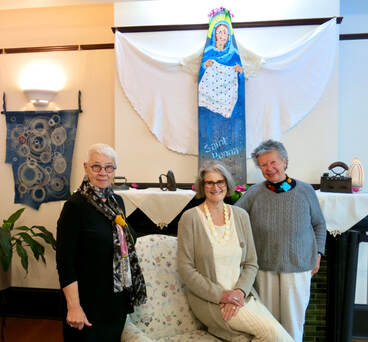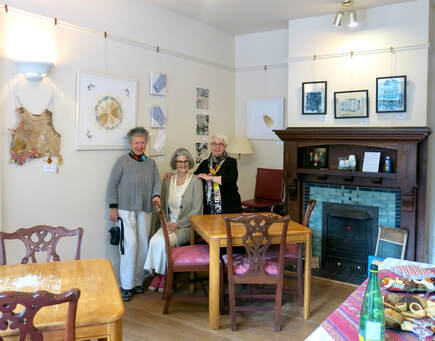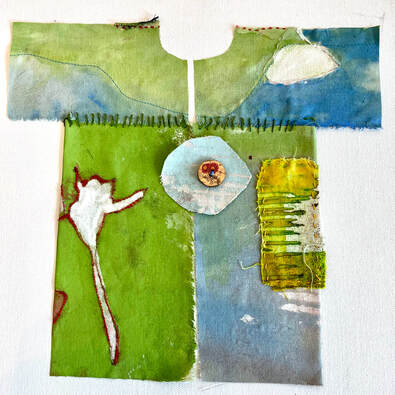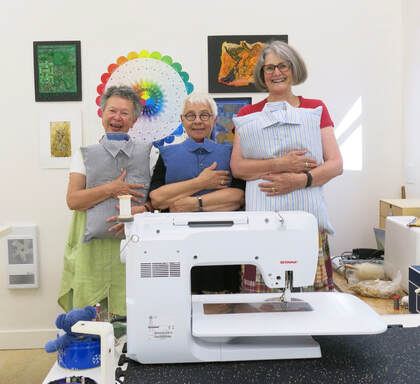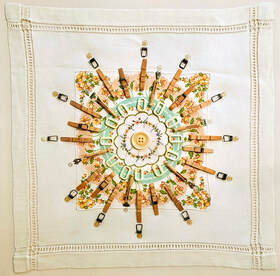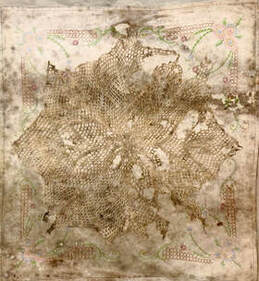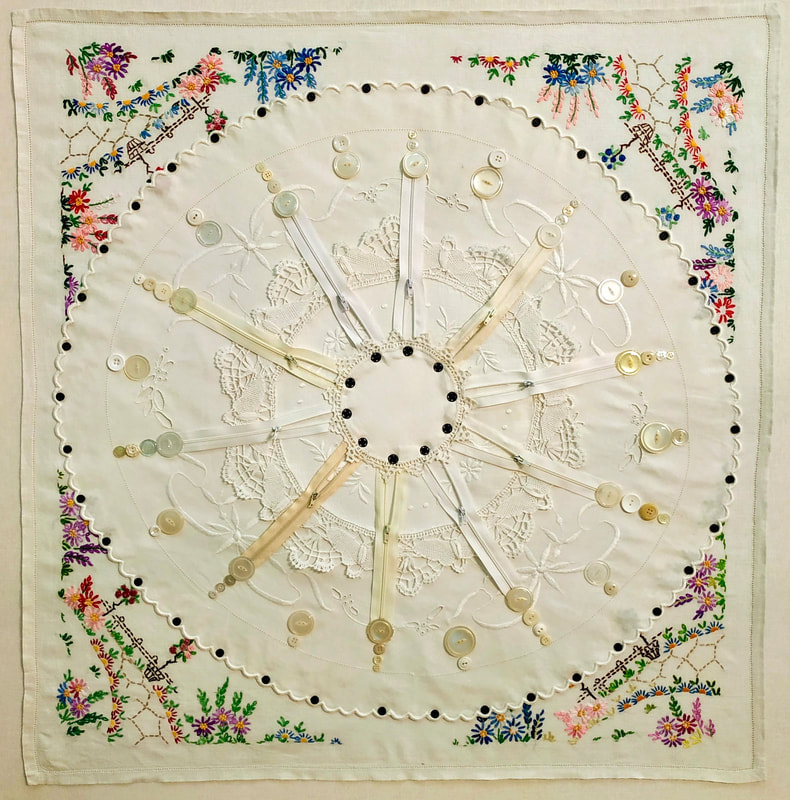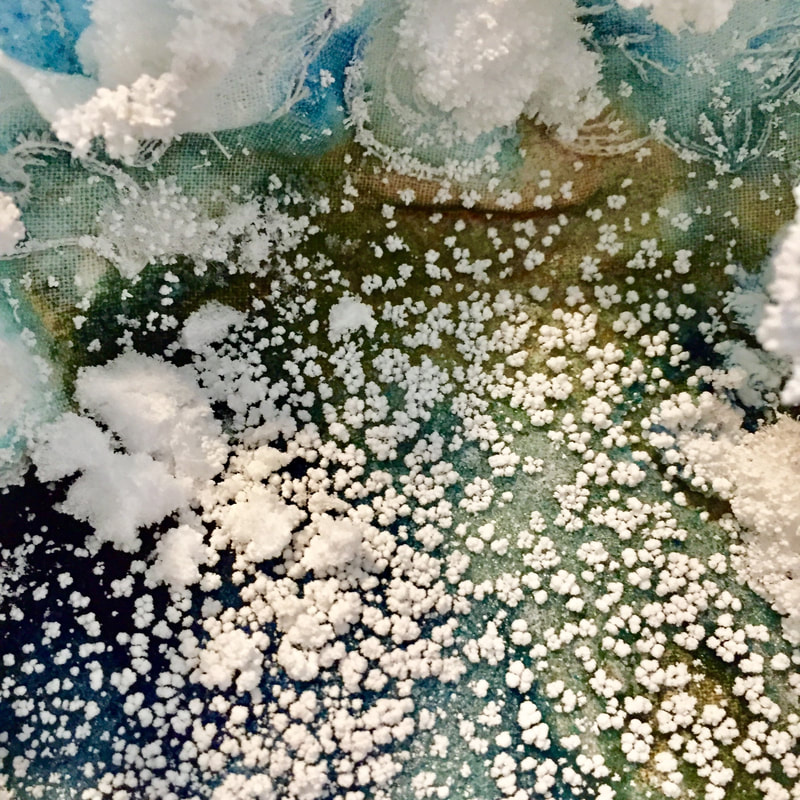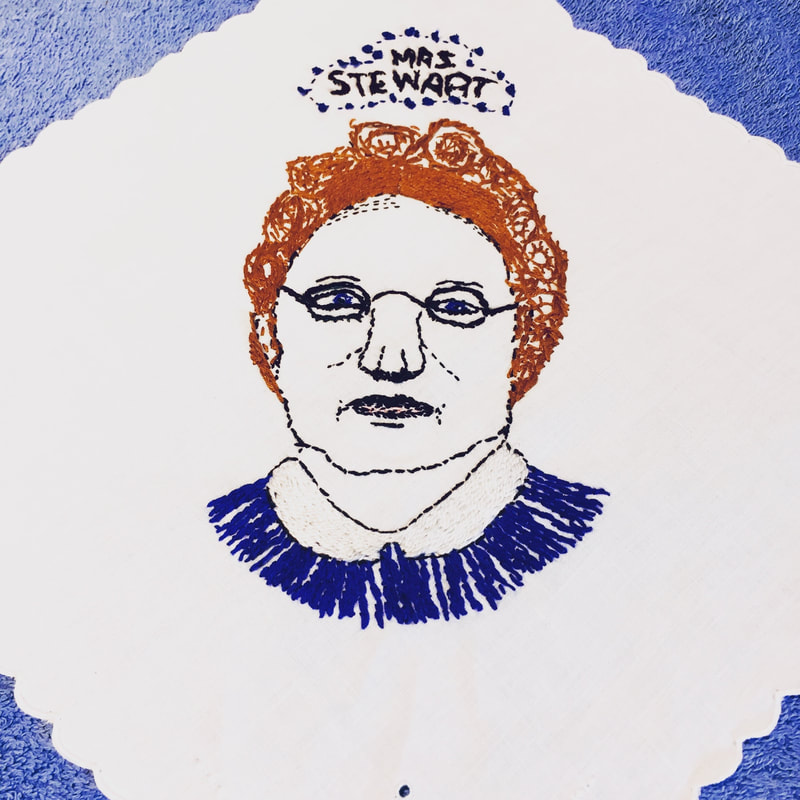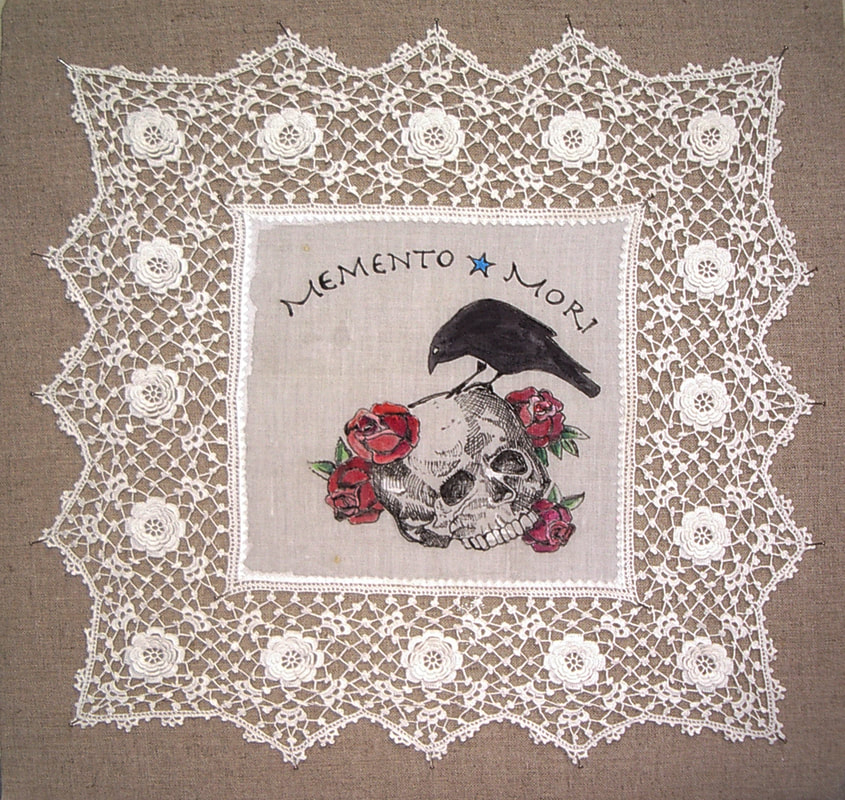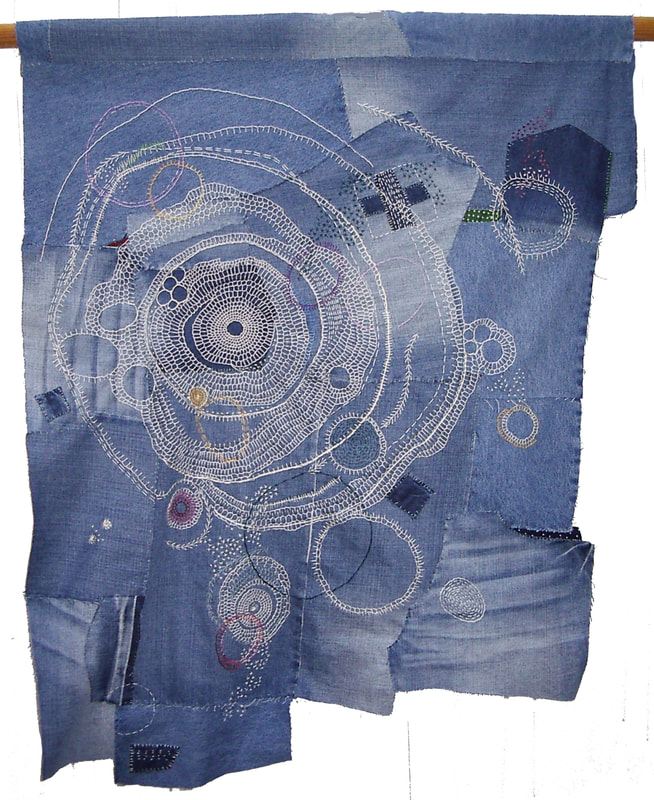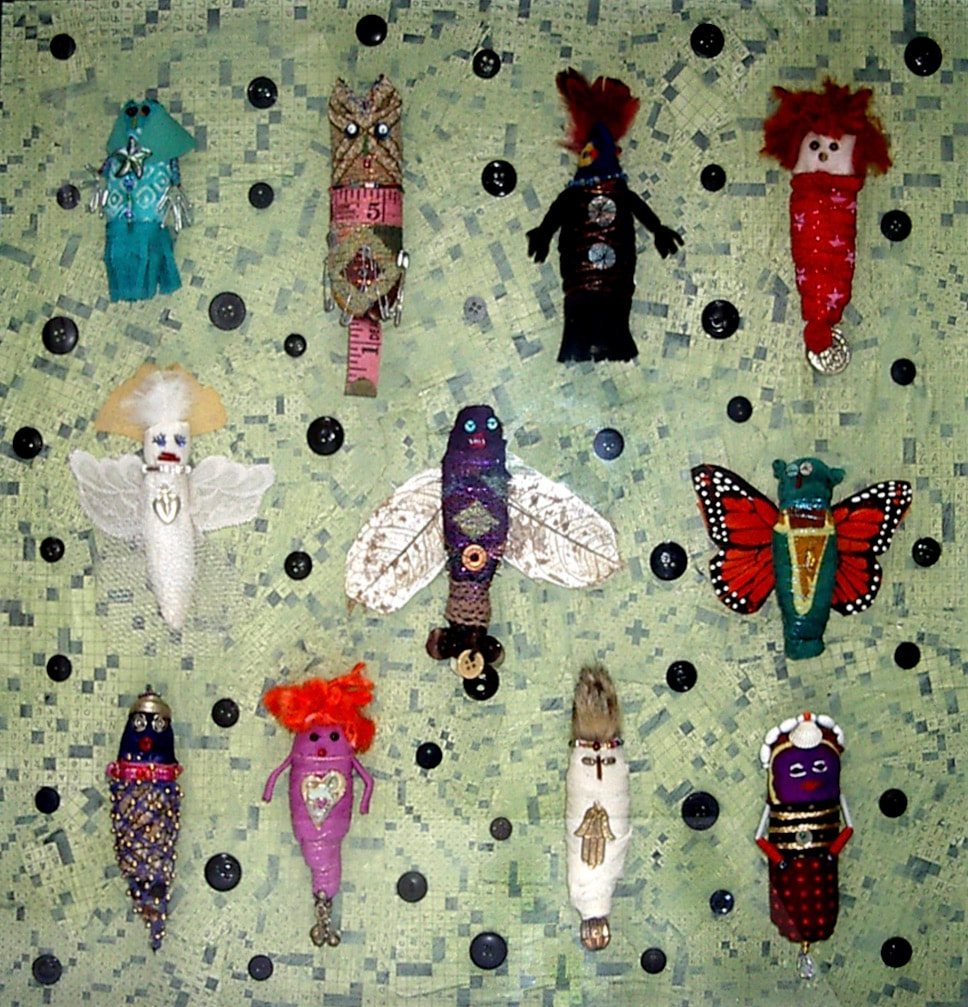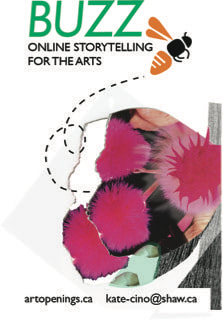The Laundry Room: Airing our Linens
Lesley Turner, Laura Feeleus & Elizabeth Carefoot
at Goward House, 2495 Arbutus Road
Sept 30 - Nov 30, 2022 Weekdays: 9:30 - 3:30
Opening Reception: Sunday, Oct 23, 1:30 - 3:30.
Lesley Turner, Laura Feeleus & Elizabeth Carefoot
at Goward House, 2495 Arbutus Road
Sept 30 - Nov 30, 2022 Weekdays: 9:30 - 3:30
Opening Reception: Sunday, Oct 23, 1:30 - 3:30.
This exhibition brings together three talented fibre artists at historic Goward House. Built in 1903, the house was designed by Mary Goward to emulate a British colonial bungalow. Woodlands, the property, has a large garden and remains an oasis of green in Saanich. Visitors to the heritage home and senior centre will delight in the almost 60 unique fibre-based creations. Included are installations of antique laundry artifacts, such as irons and sewing machines.
Did you know there was a patron saint of washerwomen? Saint Hunna, who lived in 7th century Europe, was known as the Holy Washerwoman. Born into nobility, Hunna managed her own estate, as well as visiting poor and sick neighbours. She preached gospel while cleaning their homes and clothes. Portraits of Saint Hunna show an attractive woman, piously scrubbing clothes or primly ironing in a fancy dress.
Saint Hunna personifies the “cleanliness is next to Godliness” proverb. This phrase was first used by Victorian Christian preachers, who stressed the morality of personal hygiene and cleanliness. The phrase “airing dirty linen” refers to talking publicly about embarrassing personal issues. As a metaphor, it points out the shameful nature of soiled fabric. Traditionally, “airing our linens” meant placing stored items outside to freshen while house cleaning. For the three artists in the exhibition, “airing our linens” alludes to speaking their truths. They aim to increase awareness of issues and further social change.
Below: Two photos from the Oct 23 Reception. Plan your visit to this historic home and fascinating show!
In the photo, Elizabeth Carefoot, Laura Feeleus and Lesley Turner playfully hug their “Stuffed Shirts”. The Stuffed Shirts are pillows covered by men’s business shirts, made by Turner and offered for sale at Goward House. Turner’s fixation with men’s shirts comes from the fact she laundered, ironed, buttoned and folded thousands in her domestic career of wife and mother. As a couple, they worked as a team, she explains, each performing their regular routines in a relationship of interdependence. “The difficult part for me,” she says, “is after 20 years of service, I’m without a resume and remuneration.”
Turner is a graduate of two universities, where she studied Embroidered Textiles and Visual Design. She has travelled the world collecting vintage cloth and linens to use in her surface design work. Turner has completed some exquisitely detailed Laundry Mandalas as part of the exhibition. Sewn on antique cloth, she uses domestic items like clothes pegs, zippers, buttons and metal snaps to create the patterns. The Laundry Mandalas carry the idea of chanted mantras, needed for focus during long hours of detailed work. Turner makes reference to the relentless laundry cycle of stained doilies and tea clothes in Stain. Launder. Repeat. She buried the tea cloth and crocheted doily in the earth for several weeks, finally rescuing, laundering and mounting the tea cloth.
Laura Feeleus is a busy professional artist who is a member of the Gage Gallery Collective. She is one of the founders of the artist-run centre arc.hive. Feeleus has vivid memories of her mother using a steel washing tub and scrub board. She recalls the excitement of their first washing machine and helping her mother one day a week.
Feeleus is interested in the advertising techniques used by soap manufacturers, and how soap was presented as a miraculous cure for women. In Blue Cheer, we see a glamorous woman thrilled with her box of Cheer detergent. “It’s just what I’ve always wanted,” she trills. The bluing agent in Cheer was supposed to whiten and brighten clothing. Feeleus recalls her mother placing a cotton bag filled with bluing agent in the rinse water. “As a child, I clearly saw the connection,” says Feeleus, “between the whiteness of the clothing and the goodness of the people.”
Laura Feeleus is a busy professional artist who is a member of the Gage Gallery Collective. She is one of the founders of the artist-run centre arc.hive. Feeleus has vivid memories of her mother using a steel washing tub and scrub board. She recalls the excitement of their first washing machine and helping her mother one day a week.
Feeleus is interested in the advertising techniques used by soap manufacturers, and how soap was presented as a miraculous cure for women. In Blue Cheer, we see a glamorous woman thrilled with her box of Cheer detergent. “It’s just what I’ve always wanted,” she trills. The bluing agent in Cheer was supposed to whiten and brighten clothing. Feeleus recalls her mother placing a cotton bag filled with bluing agent in the rinse water. “As a child, I clearly saw the connection,” says Feeleus, “between the whiteness of the clothing and the goodness of the people.”
Mrs Stewart depicts the stalwart woman whose image graced containers of bluing compound. Her embroidered cap, wire glasses and rounded collar reveal a serious person. Bluing Experiment shows the chemical reaction that unfolds when a liquid bluing agent is poured on a damp handkerchief. She used antique washboards as grounds and watched in amazement as the salts in the liquid blossomed into crystalline forms. Feeleus plans to show some of her “salt crystal gardens” at Goward House. The photo shows the beauty of the patterns with radiating colours of ultramarine, turquoise and copper.
Elizabeth Carefoot’s art education includes etching and painting courses, animation, graphic design and illustration. The multi-media artist creates soft sculpture, collages, constructions and colourful acrylic abstractions. Carefoot notices that removing shameful stains is often considered “women’s work”. Her approach to reviving damaged fabric is to enhance the article using stitching and decoration. Boro is a Japanese stitching technique used by women to patch worn textiles. In Boro Sample she uses a modified blanket stitch to sew together fragments of blue jean material. The meandering loops and patterns in Boro Sample are hand-stitched and lend beauty as well as strength to the cloth.
Lint Dollies shows a unique appreciation for dryer lint. From collected lint, the artist fashioned cocoon-shaped dollies. For strength, she wrapped them with various materials; for adornment, she added baubles, beads and unusual accoutrements.
Carefoot's painting and drawing skills are evident in Memento Mori (remember death). The skull is carefully modelled with ink-based cross-hatching. The painted roses and blackbird add a Gothic theme to the handkerchief. The artwork was done to honour Carefoot’s grandmother, a trail-blazing and talented woman, who continues to inspire her grand-daughter. Saint Hunna is honoured with a life-sized portrait on an ironing board.
Carefoot's painting and drawing skills are evident in Memento Mori (remember death). The skull is carefully modelled with ink-based cross-hatching. The painted roses and blackbird add a Gothic theme to the handkerchief. The artwork was done to honour Carefoot’s grandmother, a trail-blazing and talented woman, who continues to inspire her grand-daughter. Saint Hunna is honoured with a life-sized portrait on an ironing board.
Goward House, 2495 Arbutus Rd, Saanich, Victoria, BC V8N 1V9 Open weekdays: 9:30 - 3:30 (except holidays.)
Do you have stories to tell about “the laundry in your life?” You are welcome to share them with "The Laundry Women".
Please email:
Lesley Turner, [email protected]
Laura Feeleus, l[email protected]
Elizabeth Carefoot, [email protected]
Please email:
Lesley Turner, [email protected]
Laura Feeleus, l[email protected]
Elizabeth Carefoot, [email protected]
|
Web Design and Content by Kate Cino Arts writer published in Focus on Victoria, Yam and Boulevard. History in Art degree and Public Relations certificate from the University of Victoria This website and its content is copyright of Art Openings, 2009. All rights reserved. Written permission is required for reproduction of photos or text. [email protected] 250 598-4009 |

